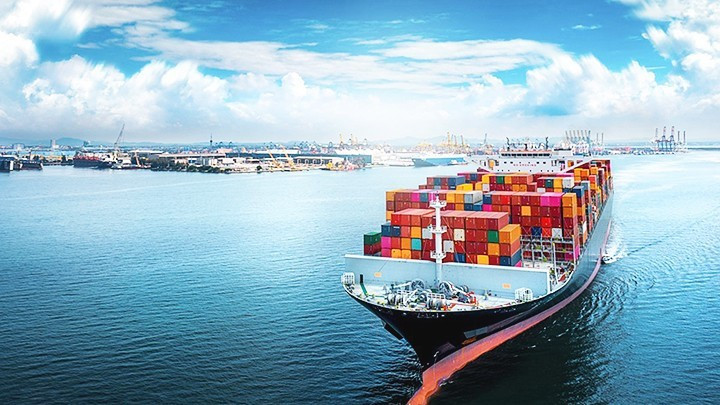Internal strength as key to sustainable growth
Without breakthrough policy reforms, Viet Nam's growth in the coming years is likely to remain moderate and struggle to achieve the momentum needed to escape the middle-income trap.

Promoting economic and commercial development is one of the pillars for Viet Nam to aim for high growth.
Since the late 1980s, Viet Nam has achieved significant economic milestones, with per capita income rising from around 80 USD in 1990 to 4,700 USD in 2024, according to World Bank data. From 1990 to 2024, GDP grew at an average annual rate of 6.73%.
However, this growth rate has been gradually declining each decade, as the capital-intensive growth model has reached its limits, with diminishing marginal productivity. Specifically, growth slowed from 7.41% (1990–1999) to 7.27% (2000–2009), then to 6.30% (2010–2019), and only 5.14% since 2020.
Persistent bottlenecks
Viet Nam has set ambitious goals: a minimum GDP growth of 8% by 2025 and double-digit rates in subsequent years, aiming to become a high-income country by 2045 with an average income of around 26,835 USD per capita.
However, the current global economic environment is unfavourable. Challenges include tariffs, rising protectionism, and internal constraints such as limited human resource quality, insufficient investment capital, and an unstable macroeconomic environment. These hinder the shift toward a science- and innovation-based growth model.
Given both external and internal pressures, without bold policy breakthroughs, Viet Nam’s economic growth is likely to remain reliant on exports and foreign investment, leading to only moderate progress and little chance of breaking free from the middle-income trap.
Associate Professor Dr Pham The Anh, Dean of the Faculty of Economics at the National Economics University, noted that Viet Nam’s current situation shares many similarities with that of other East Asian countries in earlier stages. Over the past three decades, Viet Nam’s growth has relied heavily on investment and exports, reflected in the soaring export-to-GDP ratio.
Viet Nam has attracted substantial foreign direct investment for export activities, leveraging its abundant labour force while actively engaging in next-generation free trade agreements. However, unlike other East Asian economies, Viet Nam has not successfully integrated into global supply chains. FDI enterprises operate largely in isolation, with limited linkage to domestic firms, leaving Vietnamese businesses stuck in low-value processing stages and highly dependent on imported materials.
In addition, Viet Nam faces other major challenges, such as unstable tax revenues, high recurrent expenditure, sluggish public investment disbursement, and mounting debt service obligations approaching warning thresholds. Current monetary policies also show weaknesses, such as excessive money supply growth, low real interest rates, and credit flowing more into real estate and assets than into productive sectors.
According to Associate Professor, Dr. Pham The Anh, scaling up investment in infrastructure and human capital presents a significant challenge for Viet Nam. Without cohesive policies to improve public spending efficiency, rationally shift expenditure allocations, and mobilise sustainable revenue sources to replace unstable or growth-dampening streams, the economy risks facing high budget deficits, macroeconomic instability, and even crisis.
From aspiration to action
To address the bottlenecks and create breakthroughs for growth, Dr Pham The Anh proposed several recommendations. He emphasised significantly reducing the state’s recurrent expenditures. Enhancing operational efficiency, streamlining staffing, and tightly controlling inefficient spending could free up substantial capital for infrastructure investment. Moreover, Viet Nam must actively seek new, sustainable revenue sources to partially replace traditional ones.
He also suggested implementing corporate income tax incentives based on localisation rates. This could incentivise export-oriented enterprises to use more domestic materials, components, and services, thereby fostering the development of supporting industries. Not only would this increase the local value added in export products, but it would also create jobs and boost the production capacity of Vietnamese firms.
By securing domestic supply chains, Viet Nam’s exporters could better withstand adverse international trade policies, ensuring stability and sustainability in exports.
Divesting from unnecessary or underperforming state-owned enterprises could also stimulate long-term growth by reallocating resources to more efficient sectors.
Sharing a similar view, Professor Dr Tran Thi Van Hoa, Vice President of the National Economics University, stressed three key pillars for Viet Nam to achieve high growth:
The first pillar is to fully implement an “institutional revolution”: streamlining the state apparatus for greater efficiency, professionalism, and modernity; undertaking genuine administrative reform and drastically cutting compliance costs; while strengthening transparency, accountability, and public service capacity.
The second pillar is promoting trade-driven economic growth through FDI attraction strategies, enhancing domestic linkages, developing the digital economy, and fostering emerging industries. Viet Nam must prioritise building a modern, secure, and integrated national digital infrastructure. It should also expand economic space through high-speed motorways, ring roads, multimodal regional transport systems, high-speed rail, upgraded seaports and international airports, and ensure energy security with a balanced structure that prioritises renewable energy and smart grids. Additionally, Viet Nam needs to develop advanced digital infrastructure, including 5G/6G, data centres, cloud computing, and concentrate resources on dynamic zones, economic corridors, and national growth poles with strong spillover effects.
The third pillar, according to Professor Dr Tran Thi Van Hoa, is reorienting growth objectives. High GDP growth should not be the sole goal; instead, growth quality should be the core focus, reflected in labour productivity, innovation capacity, and self-reliance in technology and supply chains.
“Viet Nam once achieved remarkable success by leveraging low-cost labour and FDI inflows. However, this model is reaching its limits. A shift from quantity to quality—prioritising technology, skills, and innovation over cheap labour—is now urgent. Instead of spreading resources thinly across labour-intensive sectors, Viet Nam should prioritise high-value sectors such as technology, semiconductors, renewable energy, and modern logistics,” she stated.
To achieve the goal of becoming a high-income country by 2045, experts believe Viet Nam must learn from East Asian countries, especially Japan, the Republic of Korea, and Singapore, in crafting and implementing development strategies.
The first key lesson is the strong guiding role of the state in identifying strategic sectors, developing long-term plans, and enacting supportive policies on taxation, credit, and business environment reform. The state should lead the industrialisation process, concentrating resources in areas with competitive advantages and strong export potential.
Furthermore, all successful East Asian economies have prioritised investment in modern infrastructure (transport, energy, telecommunications) and high-quality human capital. Lessons in attracting FDI, facilitating technology transfer, and promoting R&D are also crucial to boosting productivity and competitiveness in Viet Nam’s economy.








